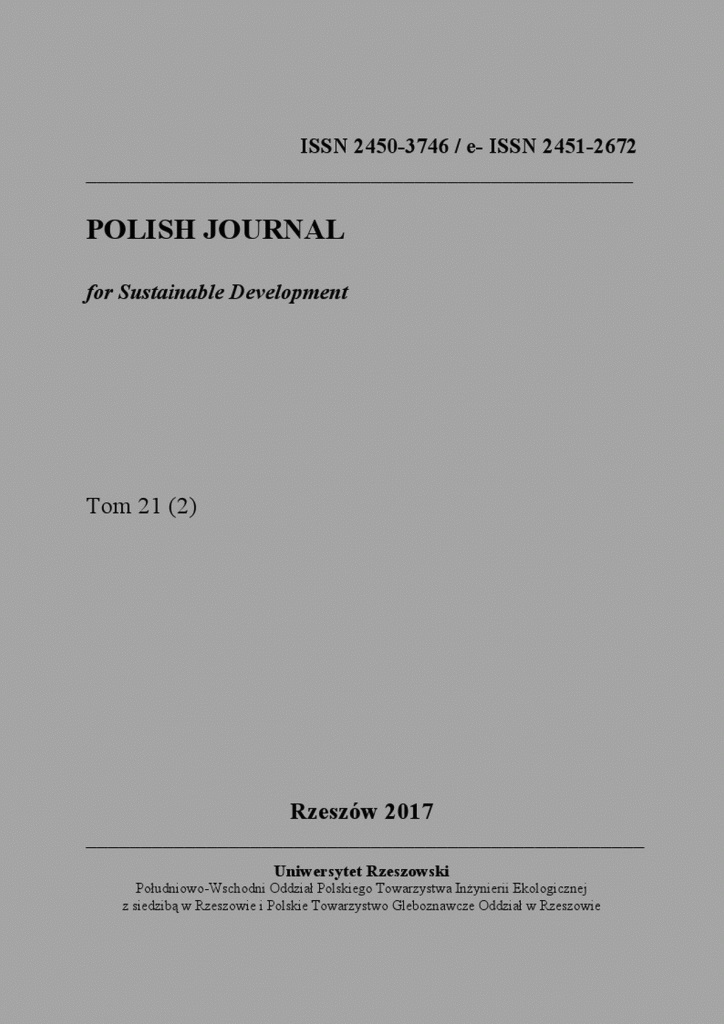Leds application in rooting of chrysanthemum
DOI:
https://doi.org/10.15584/pjsd.2017.21.2.17Keywords:
supplementary lighting, rooting, light-emitting diodes (LEDs), sodium lamps (HPS), cuttingsAbstract
Supplementary lighting is commonly used to increase yield and quality of ornamental plants. Light – emitting diodes (LEDs) represent a promising technology for the greenhouse industry that has technical advantages over traditional sodium lamps. In the production of chrysanthemums it is particularly important to have properly developed and well-rooted cuttings. In year – round controlled cultivation of chrysanthemums it is necessary to use supplementary lighting from November to mid-February. The possibility of application of LED during the rooting of two cultivars of chrysanthemums was investigated. Our data suggest that LEDs are suitable replacements for HPS lamps as supplemental light sources during the cuttings rooting. Lower energy consumption compared to conventional sodium lamps will increase the profitability of year – round controlled production of chrysanthemums.
Downloads
References
Bergstrand K.-J., Asp H., Schüssler H.K. 2016. Growth control of ornamental and bedding plants by manipulation of photoperiod and light quality. Acta Horticulturae. 1134. 33-40.
Currey C.H.J., Lopez R.G. 2013. Cuttings of impatiens, pelargonium and petunia propagated under light-emitting diodes and high-pressure sodium lamps have comparable growth, morphology, gas exchange and post-transplant performance. HortScience. 48 (4). 428-434.
Jeong S., Hogewoning S., Van Leperen W. 2014. Responses of supplemental blue light on flowering and stem extension growth of cut chrysanthemum. Scientia Horticulturae. 165. 69-74.
Jeong S.W., Park S., Jin J.S., Seo O.N., Kim G.S., Kim Y.H., Bae H., Lee G., Kim S.T., Lee W.S., Shin S.C. 2012. Influences of four different light – emitting diode lights on flowering and polyphenol variations in the leaves of chrysanthemum (Chrysanthemum morifolium). J. Agric. Food Chem. 60 (39). 9793-9800.
Klamkowski K., Treder W. 2011. Wpływ deficytu wody na wymianę gazowa liści, wzrost i plonowanie dwóch odmian truskawki uprawianych pod osłonami. Infr. Ekol. Ter.Wiej. 5. 105-113.
Kurilčik A., Mikluńytė-Čanova R., Dapkūnienė S., Žilinskaitė S., Kurilčik G., Tamulaitis G., Duchovskis P., Žukauskas A. 2008. In vitro culture of Chrysanthemum plantlets using light-emitting diodes. Central European Journal of Biology. 3 (2). 161-167.
Kurilčik A., Dapkūnienė S., Kurilčik G., Duchovskis P., Urbonavičiūtė A., Ņilinskaite S., Ņukauskas A. 2011. Effect of far – red light on the growth of chrysanthemum plantlets in vitro. Scien. Wor. of the Lith. Inst. of Hort. and Lith. Univ. of Agric. Sodininkystė ir Darņininkystė. 30 (3-4). 103-108.
Meng Q., Runkle E. 2014. Controlling flowering of photoperiodic ornamental crops. HortTechnology. 24 (6). 702-711.
Morrow R.C. 2008. LED lighting in horticulture. HortScience. 43 (7). 1947-1950.
Randal W.C., Lopez R.G. 2014. Comparison of supplemental lighting from high-pressure sodium lamps and light-emitting diodes during bedding plant seeding production. HortScience. 49 (5). 589-595.
Treder J., Klamkowski K., Treder W., Puternicki A., Lisak E. 2012. Wpływ doświetlania lampami sodowymii LED na wybrane parametry wzrostu roślin rabatowych. Prace Instytutu Elektrotechniki. 256. 143-154.
Wallace C., Both A.J. 2016. Evaluating operating characteristics of light sources for horticultural applications. Acta Horticulturae. 1134. 435-444.
Woźny A. 2015. Źródła światła wykorzystywane w produkcji ogrodniczej. Prace Instytutu Elektrotechniki. 269. 47-54.
Downloads
Published
Issue
Section
License
Copyright (c) 2017 Polish Journal for Sustainable Development

This work is licensed under a Creative Commons Attribution-NonCommercial-NoDerivatives 4.0 International License.


